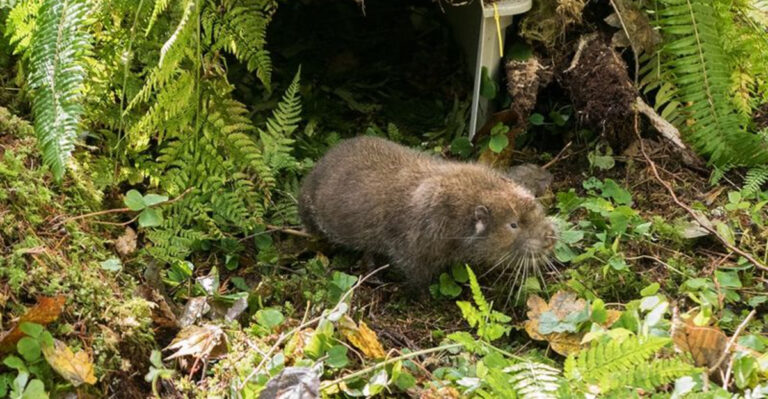The Surprising Threat Dholes Pose To Tigers In The Wild
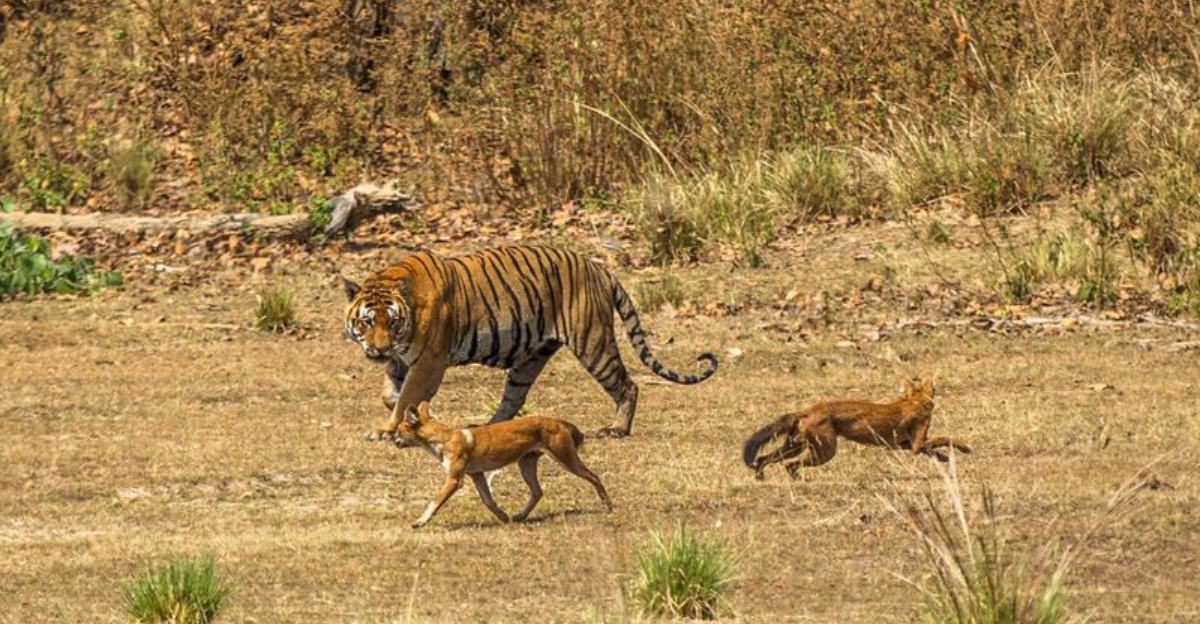
Deep in the jungles of Asia, an unexpected rivalry unfolds between two predators. Tigers, often viewed as the ultimate jungle kings, face a surprising challenger – dholes, or Asiatic wild dogs.
These pack-hunting canids might seem no match for a massive tiger, but they’ve developed strategies and behaviors that make them formidable opponents.
Let’s explore how these underdogs of the forest pose a genuine threat to one of nature’s most perfect predators.
1. Pack Power Trumps Size
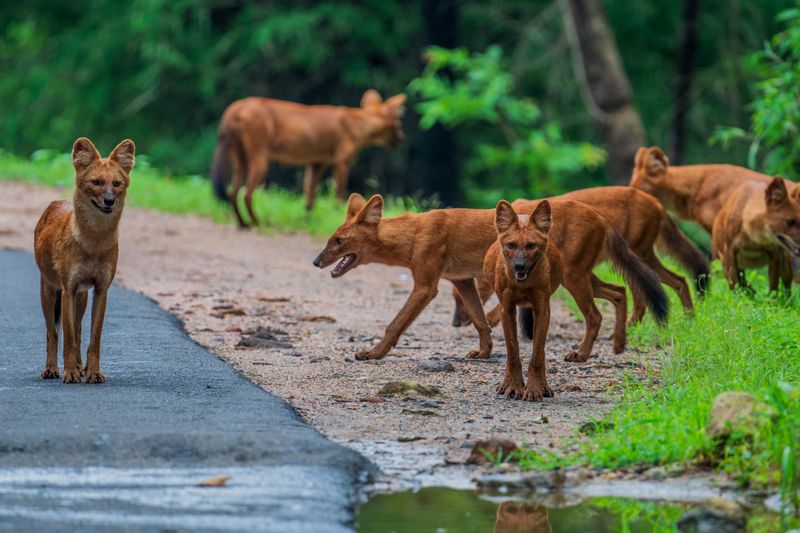
Dholes hunt in packs of 5 to 12 members, though groups of up to 40 have been recorded. This numerical advantage completely changes the predator dynamics against solitary tigers.
A single tiger, despite its impressive 500-pound frame and powerful jaws, struggles against the coordinated assault of multiple dholes. The wild dogs use sophisticated flanking maneuvers, taking turns to exhaust their larger opponent.
Much like wolves hunting bison in North America, dholes demonstrate that teamwork can overcome even the most formidable size differences in nature’s battlefield.
2. Fearless Harassment Tactics

Unlike most forest creatures that flee at a tiger’s approach, dholes show remarkable boldness. They employ a strategy of persistent harassment, taking turns nipping at a tiger’s flanks and hindquarters.
This psychological warfare wears down even the most powerful tigers. Scientists have observed dholes following tigers for hours, preventing them from resting or hunting effectively.
The mental fatigue becomes as dangerous as physical threats. A tiger surrounded by yipping, darting dholes experiences stress levels that can impact its hunting success for days afterward.
3. Stolen Meals Create Conflict

Food theft represents one of the most direct conflicts between these species. A hungry dhole pack can force a tiger to abandon its kill through sheer persistence and numbers.
Camera trap studies in Indian reserves have captured remarkable footage of this behavior. One tiger, after spending hours bringing down a sambar deer, lost its meal to just seven dholes through their relentless approach.
This kleptoparasitism (food stealing) creates a significant energy deficit for tigers. Having expended massive energy on a hunt, losing the nutritional reward can lead to dangerous caloric deficits for these big cats.
4. Competing For The Same Prey
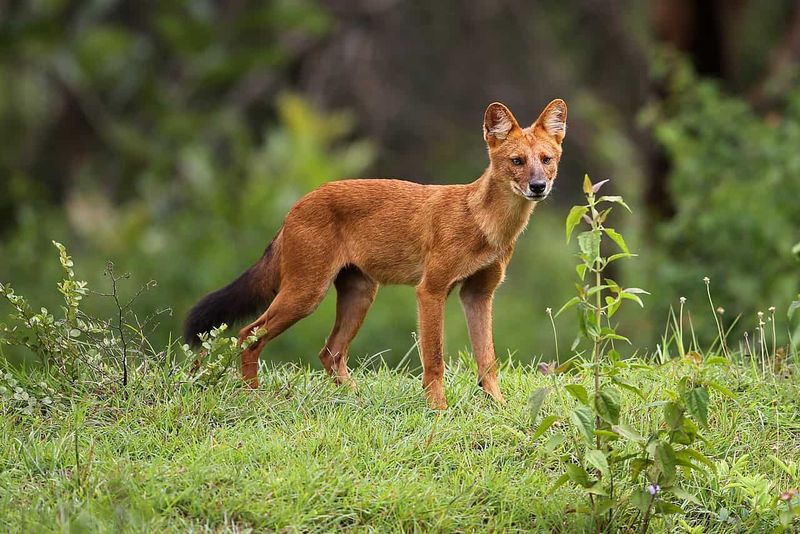
Both predators target remarkably similar prey species across their shared range. Medium-sized ungulates like deer, wild pigs, and antelope form the dietary backbone for both tigers and dholes.
Research in Thailand’s Huai Kha Khaeng Wildlife Sanctuary revealed an 83% overlap in prey preferences. This direct competition for limited resources intensifies tensions between the species.
During dry seasons when prey becomes concentrated around water sources, confrontations increase dramatically. The overlap forces both species into more frequent and potentially dangerous encounters as they pursue the same dinner options.
5. Cub Vulnerability Creates Danger
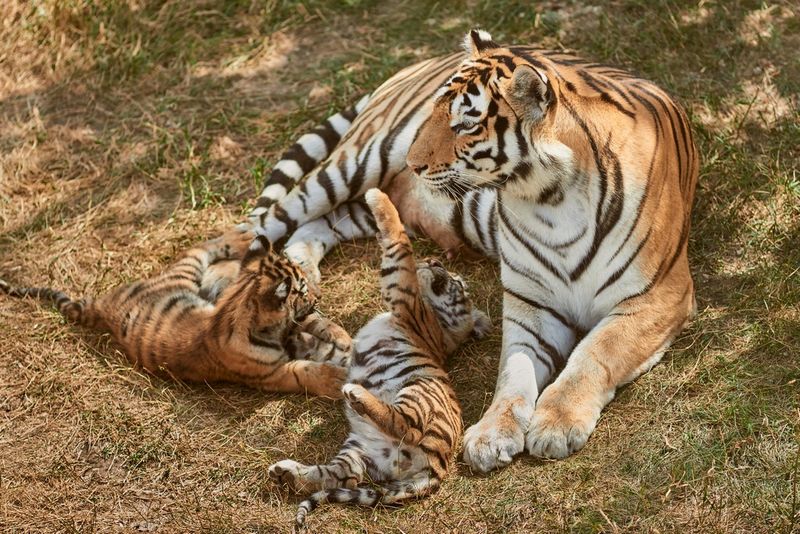
Tiger cubs represent perhaps the most vulnerable point in the big cat’s life cycle. Mother tigers must leave their young temporarily while hunting, creating windows of opportunity for opportunistic dholes.
Dholes won’t hesitate to attack unguarded cubs. Their pack structure allows some members to distract the mother while others target the vulnerable young.
This threat forces tigresses with cubs to be extremely vigilant, further taxing their energy reserves during an already challenging period of motherhood. The fear of dhole attacks influences critical tiger behaviors like den selection and hunting patterns.
6. Dholes Target Injured Tigers
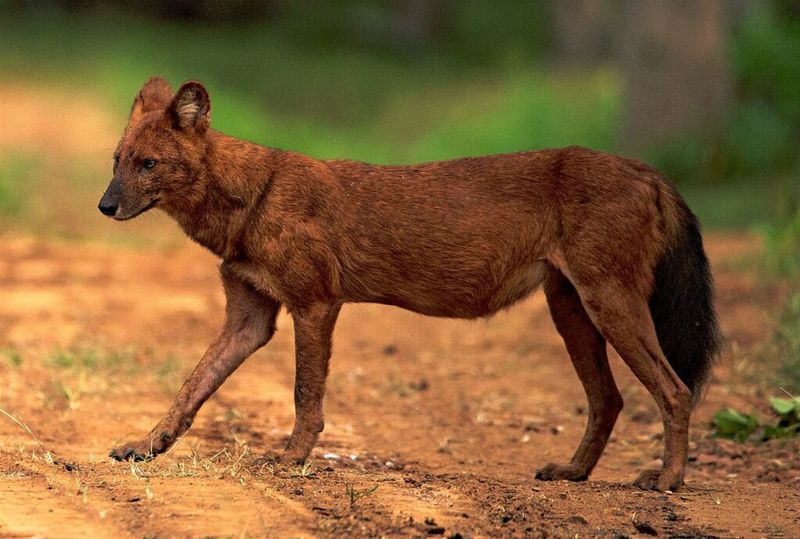
Nature shows little mercy to the wounded. Dholes possess an uncanny ability to detect weakness in other predators, including tigers suffering from injuries or illness.
An otherwise formidable tiger with a limp from a territorial dispute or hunting injury suddenly becomes potential prey. Park rangers have documented cases where dhole packs have successfully killed weakened adult tigers.
This opportunistic behavior serves as nature’s cleanup crew but also represents a genuine threat to tigers already struggling. Even minor injuries can attract unwanted dhole attention, turning the tables on the usual predator-prey relationship.
7. Territorial Overlap Creates Tension
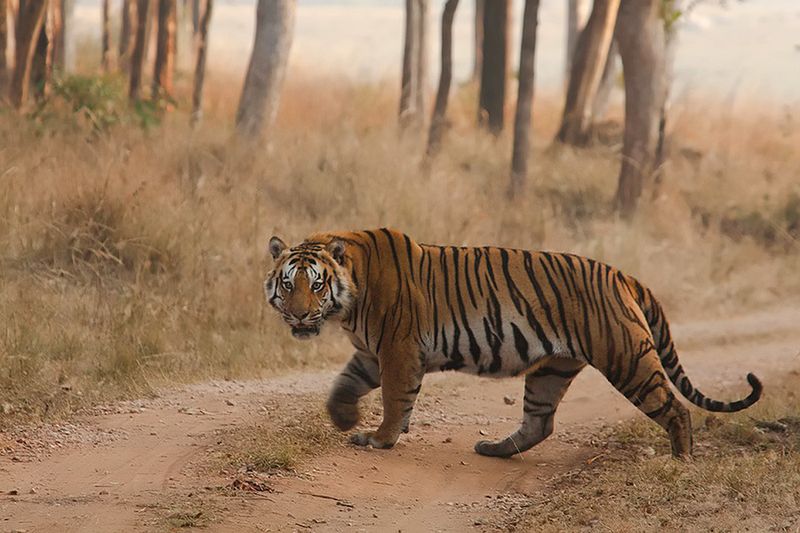
Both species require large territories to sustain themselves, creating inevitable overlap zones. A single tiger might need up to 100 square kilometers, while dhole packs utilize similarly expansive ranges.
GPS collar studies reveal fascinating patterns of avoidance and confrontation. Tigers will sometimes completely alter their movement patterns after encountering fresh dhole markings.
The territorial pressure becomes particularly intense in fragmented forest habitats. As human development shrinks available wilderness, tigers and dholes are increasingly forced into the same remaining patches, intensifying their competitive relationship.
8. Water Resource Battles

During dry seasons, water becomes a flashpoint for tiger-dhole conflicts. Both species must drink regularly, creating predictable confrontation points around limited water sources.
Camera traps positioned at watering holes capture fascinating standoffs. A tiger’s approach typically clears other wildlife, but dhole packs often stand their ground, creating tense drinking arrangements.
These water-centered conflicts reach peak intensity during droughts. Conservation reports from Ranthambore National Park documented a 40% increase in tiger-dhole interactions during an unusually dry 2019 season, most centered around the park’s shrinking lakes.
9. Dholes’ Surprising Intelligence
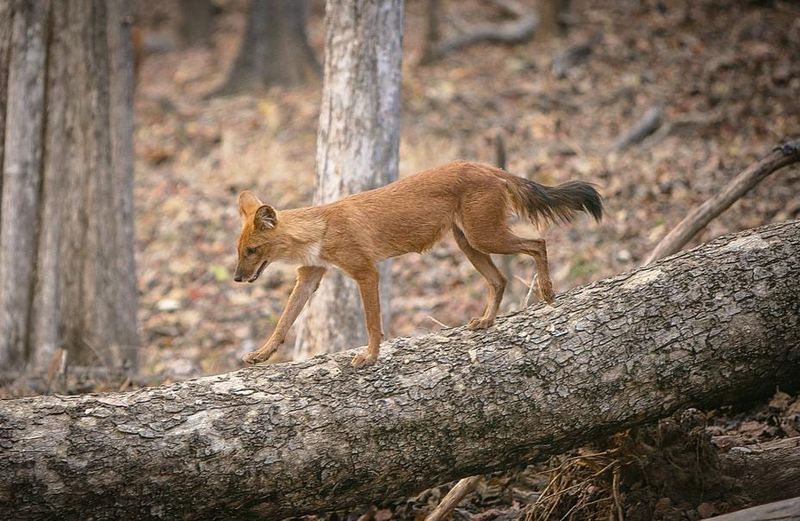
Underestimating dhole intelligence has proven fatal for many tigers. These wild dogs demonstrate problem-solving abilities that rival those of wolves or coyotes, applying their collective brainpower against larger foes.
Researchers have observed dholes using terrain features strategically. They’ll drive tigers toward swampy areas where the big cat’s weight becomes a disadvantage, or use rocky outcroppings as safe observation points.
Their communication skills further enhance their effectiveness. Dholes utilize at least 12 distinct vocalizations to coordinate complex maneuvers against tigers, allowing real-time tactical adjustments that single animals simply cannot match.
10. Habitat Loss Intensifies Conflicts

Human development has compressed tiger and dhole populations into ever-shrinking habitats. Both species once roamed across most of Asia, but now occupy less than 7% of their historical ranges.
This compression forces more frequent encounters. In undisturbed ecosystems, natural spacing might limit interactions, but fragmented forests create artificial density.
Conservation data from India’s Western Ghats shows tiger-dhole conflicts increasing by 23% over the past decade as surrounding development intensified. The pressure-cooker effect of habitat loss transforms natural competition into something more desperate and dangerous for both species.
11. Dholes Recover Faster From Population Declines

Reproductive biology gives dholes a significant advantage in population recovery. Female dholes can produce up to 10 pups annually and reach breeding age by 2 years, while tigresses typically raise just 2-3 cubs every 2-3 years.
This reproductive edge allows dholes to bounce back from population setbacks much faster. After a disease outbreak reduced dhole numbers in Thailand’s Khao Yai National Park by 60% in 2011, the population returned to previous levels within just 4 years.
Tigers, conversely, need decades to recover from similar declines. This fundamental biological difference shapes their competitive dynamics across their shared range.
12. Climate Change Alters The Balance
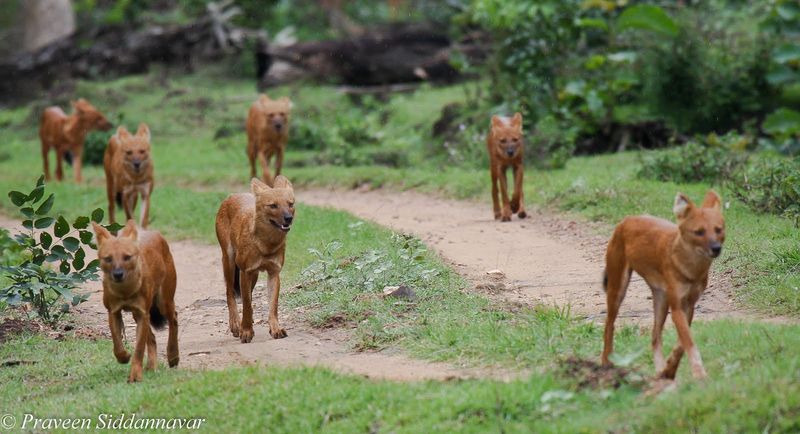
Shifting climate patterns are quietly reshaping tiger-dhole dynamics. Dholes demonstrate greater adaptability to changing conditions, including altered rainfall patterns and temperature increases.
Their flexible social structure allows dholes to adjust pack sizes based on resource availability. During challenging periods, they can form larger groups to maintain hunting success.
Tigers lack this adaptability, requiring consistent conditions to thrive. Research from Myanmar’s northern forests indicates dholes are expanding into higher elevations as warming trends alter vegetation patterns, while tigers remain confined to traditional habitats, suggesting a future where dholes may gain competitive advantages in previously tiger-dominated landscapes.

